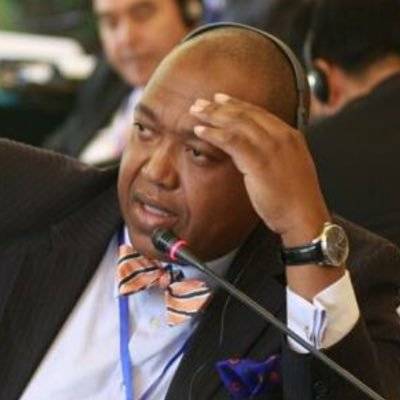The Humanitarian and Development Forum for Palestine (HDFP) held in Doha, Qatar recently brought a number of organisations to discuss the emerging sociopolitical and economic realities in the region pertaining to Palestine. Amongst the organisations that were represented at the forum were the United Nations Development Program (UNDP), the Qatar Fund, United Nations Relief and Works Agency (UNWRA), the UN’s Office for Coordination of Humanitarian Affairs (OCHA) and many others. Most representatives at the forum took turns presenting new challenges their organisations face amidst the changing refugee environments in the Middle East.
The Palestinian development and humanitarian efforts are the oldest in the world, they led to the establishment of the UNRWA which was created specifically to deal with the plight of the Palestinians. There have been a number of humanitarian and development organisations that have since emerged over the years. Organisations, particularly those inside Palestine, shared disturbing experiences on how Israel continues to interrupt the flow of humanitarian aid to Palestine. Most organisations specifically refer to the Israeli imposition of export customs and taxes on all humanitarian assistance that comes to Palestine as one significant obstacle. The majority of goods and services meant for Palestinians go through mainly Israeli ports before reaching their intended beneficiaries. It is estimated that large sums of money end up in the coffers of the state of Israel. According to Shir Hever of Aid Watch, an estimated 72 per cent of international aid ends up in the Israeli economy.
Besides continued Israeli interruptions and impediments, there are two issues which pose new challenges to humanitarian and development efforts inside and outside Palestine. The new refugee situation as a result of the influx of Syrian refugees into neighbouring countries requires a relook at the current funding models and strategies and competition for limited resources is likely to heighten and create tensions. Very little was said at the forum in this regard. How is the new competition for resources going to impact on Palestinian humanitarian efforts? Shouldn’t the humanitarian organisations in the region begin looking at joint efforts instead of acting solo?
There are suggestions of the establishment of an umbrella organisation at the civil society level in the region that will incorporate all humanitarian efforts. The only challenge in doing that is that the Palestinian cause is arguably the only one that enjoys some sort of sociopolitical consensus. Creating an umbrella body that will incorporate refugees from other countries and conflicts in the region might present a challenge, and so, understandably, Palestinian humanitarian organisations have showed reluctance in encouraging such a discussion.
Secondly, the simmering tensions within the citizens from the host nations towards the refugees particularly in Jordan and Lebanon require immediate remedial actions. These countries are experiencing serious strain on government infrastructure, that has unfortunately impacted on basic service delivery. This has culminated into growing tensions between their citizens and the refugees, including Palestinian refugees.
Researchers P.R. Kumaraswamy and Manjari Singh aptly discuss this in their paper published by the Migration and Development Journal titled Population and pressure in Jordan and the role of Syrian refugees. They argue that “the influx of refugees following the Syrian crisis is exerting pressure on the government to offer basic services to the migrant population and this has created problems for the government in providing services such as water, employment, food subsidy and housing its citizens.”
Furthermore, in Lebanon, these tensions have led to violent clashes. In December 2013, an informal Syrian campsite in the eastern town of Qsarnaba was attacked. Tensions are not only restricted to those between citizens and refugees, as there has been growing intra-refugee tensions. Palestinian refugees in these countries are beginning to see the new influx of Syrian refugees disturbing certain comfort zones they currently enjoy. “Palestinians in Lebanon have been aggrieved by the sense that Syrian refugees are trespassing on their turf.” This very important issue was also not given enough airtime at the forum.
However, notwithstanding the emergence of new humanitarian situations in the Middle East, Palestinian plight remains the most appealing. Aside from the urgency posed by the new humanitarian conditions in the region, particularly in Syria, the need for Palestinian humanitarian assistance still resonate. The unjust onslaught directed at the Palestinians by the State of Israel continues to anger many around the world and it has also triggered global sympathy for the Palestinians. This has culminated into continual flow on humanitarian assistance to Palestine.
The crises in Yemen, Iraq and Libya has added a strain in humanitarian financial resources generally in the Middle East. The situation is most likely to continue as political resolutions continue to elude the antagonists in these countries. Therefore, those involved in humanitarian efforts in these countries need to look at innovative ways of sharing the dwindling resources, ways which will benefit all the downtrodden refugees in the region.
The views expressed in this article belong to the author and do not necessarily reflect the editorial policy of Middle East Monitor.


![Khalifa Jassim Al-Kuwari, Director General of the Qatar Development Fund addresses delegates at the Humanitarian and Development Forum for Palestine in Doha, Qatar on March 8, 2017 [Qatar Charity / Anadolu Agency]](https://i0.wp.com/www.middleeastmonitor.com/wp-content/uploads/2017/03/20170308_2_22282680_19652557.jpg?fit=1200%2C800&ssl=1)









